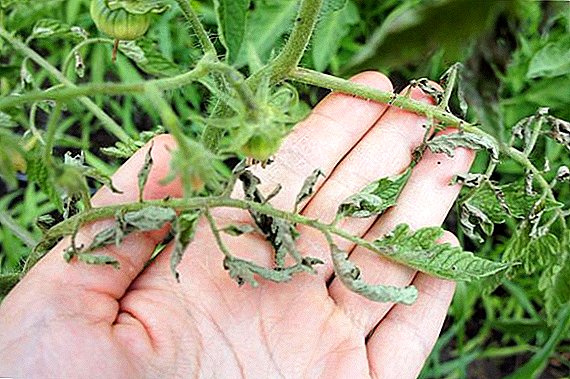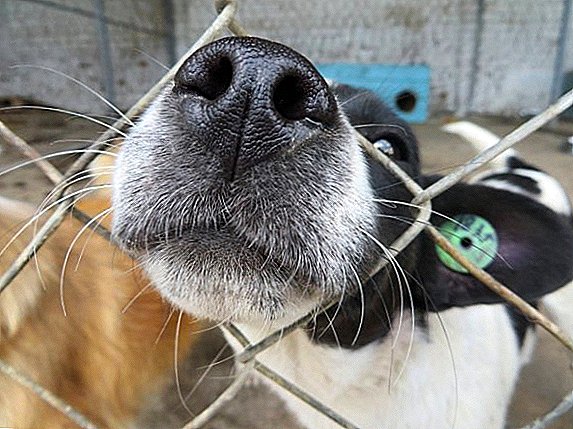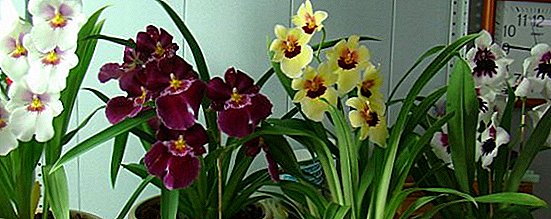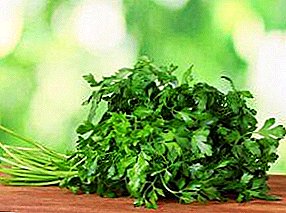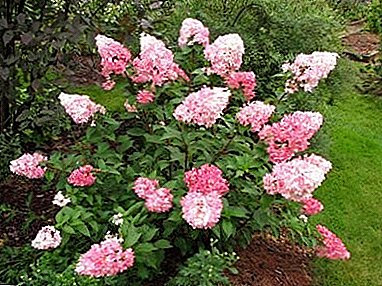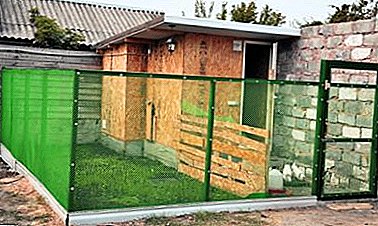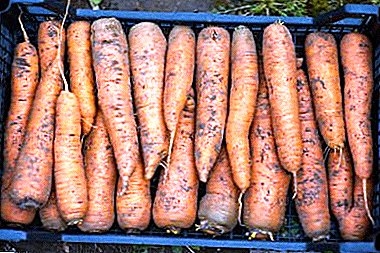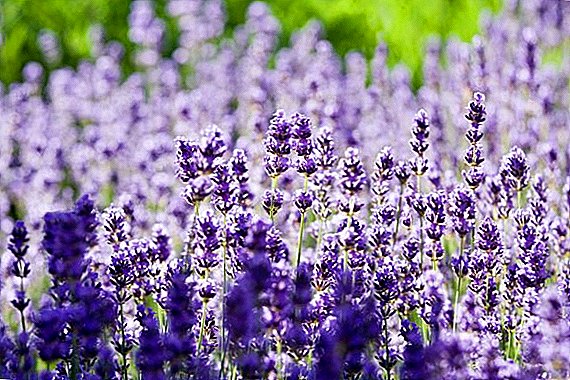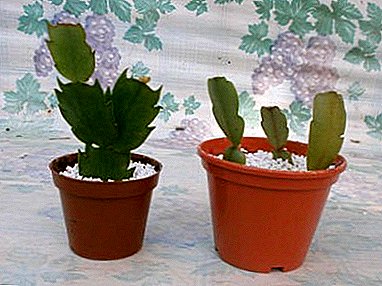
Zigokaktus, Schlyumberger or Decembrist is an interesting and beautiful houseplant. The uniqueness of this cactus - it does not have thorns. It can be found on the windowsills of many apartments.
The popularity of the Decembrist is not accidental - an attractive appearance, ease of care and winter flowering contribute to this fact. But no less, in order to get a healthy and flowering plant, he needs to provide suitable growing conditions. In order for the care and reproduction of the Decembrist to be successful, you need to follow a number of recommendations.
At what time of year is it best to propagate the plant?
Zigokaktus can be propagated at any time, its cuttings root perfectly regardless of the weather outside. But the optimal time for rooting seedlings from April to May, when the plant has faded and is preparing for a rest period.
How to prepare the pot?
Cache for Decembrist can be both plastic and ceramic. Preference should be given to ceramics, it is porous and natural. It is advisable to choose the pot, which is not covered with glaze - the roots will be constantly supplied with air, and the excess moisture will evaporate through the walls. In such containers moisture will not stagnate, mold and root rot will develop.
 But these pots have a minus, the roots can grow against the walls.
But these pots have a minus, the roots can grow against the walls.
For a Decembrist, you need to choose a wide, but low pot. The root system of a flower is superficial, so water will stagnate in a deep container, as the roots will not reach the bottom of the pots.
The pot should not be very big - The plant will not bloom, increasing the green mass. Even when transplanting, the next pot should not be larger than the previous one by 1 cm in diameter.
How to prepare the land?
In nature, zygocactus grows in trees and in rock crevices, which implies free access of air to the roots and water flow. In order for the Decembrist to grow and flourish at home every year, he needs to create conditions as close as possible to natural ones.
The soil can be purchased at a specialty store or make a substrate on your own. Ingredients are as follows:
- peat;
- turf and leaf soil - it is very nutritious;
- sand, crushed expanded clay, perlite, pieces of bark of deciduous trees, brick chips, charcoal, which is used as an antiseptic.
The amount of nutritional component and baking powder should be in the ratio of 2: 1.
The substrate is made as follows:
- 1 part of turf and leaf soil;
- 1 part peat;
- 1 part of coarse sand;
- on 10% of the crushed brick and charcoal.
If you decide to buy the soil in the store, then suitable soil for cacti, only in it you need to add washed river sand or vermiculite.
When growing a zygocactus, under no circumstances should we forget about drainage, it prevents moisture stagnation. Apply:
- pebbles;
- small crushed stone;
- expanded clay;
- or charcoal.
How does zigokaktus reproduce?
Seeds
 This method is not very popular and popular. Some flower lovers are not even aware of this breeding method. Seeds can be bought at the store or obtained from their plants on their own. But, this process requires a lot of time and effort, although the process is not technically difficult.
This method is not very popular and popular. Some flower lovers are not even aware of this breeding method. Seeds can be bought at the store or obtained from their plants on their own. But, this process requires a lot of time and effort, although the process is not technically difficult.
To obtain seeds, you need to pollinate two plants in an artificial way:
- Using a soft brush, pollen of one plant is transferred to the pistil of another.
- Then it remains to wait for fruiting.
- Once the seeds are obtained, they are washed in 3% peroxide or in a solution of potassium permanganate.
When buying in a store, it is worth knowing that the seeds that are not more than a year old are the most viable. Shifts collected independently are stored in a linen bag at room temperature and 50% humidity.
Before sowing the seeds, they are heated at a temperature of 40-60 degrees for 2 days. Seed germination can be increased by soaking the planting material in a solution of one percent sodium humate.
Landing is better to move in the spring on the surface of the ground, not pouring. The first shoots will appear in the third week. You need to water the seeds from the sprayer, with warm distilled water.
Soil for sowing can be universal, in which sand is added, 50% of the volume. But you can put the seeds in clean, washed sand. To improve germination, an improvised greenhouse can be constructed by covering the container with planting material with cling film. The main condition is to air daily.
Dishes in which the seeds will be sown, pre-wiped with alcohol, and sand or substrate is disinfected. The soil should be constantly wet, the air temperature is at least +25 degrees.
Cuttings
The first condition that should be observed during the reproduction of zygocactus is a healthy mother plant. Requirements for the process are as follows:
- the plate to be planted should not have any mechanical damage;
- on the appendix must be high-quality turgor;
- it is better to give preference to those segments in which air roots have already appeared.
 After the cutting is selected, it should be prepared for planting as follows:
After the cutting is selected, it should be prepared for planting as follows:
- The process must contain 2-3 segments. It must be carefully unscrewed from the mother branch, clockwise.
- Once the seedlings are ready, they are laid out on a napkin and left for 2 days in a dark place so that a thin protective film forms on the damaged area.
There are two ways of rooting, on the choice of which further actions depend.
In the ground
For this method should be prepared:
- pots or disposable plastic cup;
- soil purchased from a store or self-prepared substrate;
- material in order to equip an improvised greenhouse - it can be: food film, plastic bag or glass jar.
- Pour the third part of vermiculite or other drainage material on the bottom of the tank.
- Then add the substrate to a full pot.
- Well moisten the ground.
- Recess cutting 5 cm.
If plastic cups are selected as containers, then one cutting is planted. In the pot you can plant a few. For rooting cuttings need to provide high humidity. - cover containers with cellophane or a can.
The roots will appear faster if you dip the root cut in the "Kornevin", before planting.
Air plants need daily for 40 minutes. Install a pot with seedlings needed in a warm bright place. The first time you need to water the cuttings only after the upper layer of the earthy coma has dried, otherwise they may fade due to the increased humidity, so not having taken root.
As soon as the seedlings begin to appear, new segments - the plant stuck and you can install pots on the window sill, and removed the film.
In water
 Before placing the cuttings for rooting in water, it must stand for 24 hours for chlorine to disappear. They take the long processes of the Decembrist, as they drop 1 segment into the water. The water in the glass should be maintained in this volume, if necessary, topped up.
Before placing the cuttings for rooting in water, it must stand for 24 hours for chlorine to disappear. They take the long processes of the Decembrist, as they drop 1 segment into the water. The water in the glass should be maintained in this volume, if necessary, topped up.
The water in the glass changes as it becomes cloudy, after about 1-2 weeks the roots will appear, which will immediately become wine through the transparent walls.
Faster roots will help a few drops of "root", added to the water. Once the roots grow into 2 cm, you can begin planting a young plant.
Care for Schlumberger after landing
Despite the fact that the plant is not capricious, for rapid flowering it is necessary to follow certain rules and know the life cycles of the plant - there are 4 of them:
- Rest time - the end of winter and spring. During this period, the plant gains strength, therefore it is provided with diffused illumination and temperature - 12-15 degrees above zero.
- In summer, active growth of green mass begins. At this time, watering should be abundant, the light is bright, and the temperature - 17-22 degrees with a plus.
- In the autumn the plant is resting again, so watering should be moderate, and the humidity is small.
What to do if you don’t survive?
Despite the fact that the cuttings are well rooted, and grow beautifully, but with young shoots difficulties may arise:
- Segments begin to wither and turn yellow - This is due to the fact that the plant is under direct sunlight.
- The stalk did not catch on and withered - most likely, it was struck by a fungal infection or rot. The reason for this may be watering with cold water. But, perhaps you have gone too far with fertilizers, then it is enough just to change the soil in the pot.
Dekabrist layers, rooted in March, in December will delight you with beautiful buds. As soon as you notice the beginnings of flowers, stop touching and transferring the plant, otherwise it will just reset the ovaries before flowering.
The reproduction of Schlumberberts process is not complicated. Choose the best option from the two possible - cutting or sowing seeds. Propagating by layering, with proper care, the plant will bloom in the same year. When sowing seeds have patience. The main rules for reproduction - good planting material, light soil and proper care.


